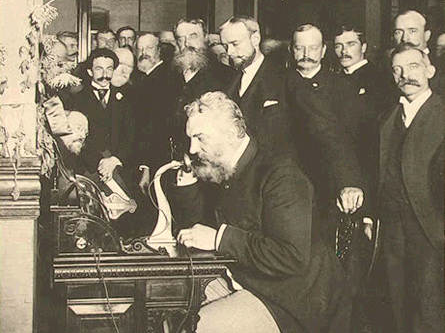Managing New Product Development: Timeless Considerations

To remain viable for a long time, a company must be good at developing and managing new products, or it must become good at doing so. How does it become good? Well, every product goes through a life cycle—it is born, it goes through several phases of development and growth, and it eventually dies as new products come along that better serve consumer needs.
There are two primary ways for a company to get a new product:
- Through acquisition.
- Through new product development.
Acquisition allows the company to purchase a whole company, a patent, or a license to produce a product owned or developed by someone else. New product development involves producing a new market offering utilizing resources in the company’s own research and development department.
By "new product," I mean original products, product improvements, product modifications, and new brands that the firm develops through its own research and development efforts.

Product Life Cycle Challenges
The product life cycle presents two major challenges. First, because all products eventually decline, a company must be good at developing new products to replace aging ones (the challenge of new-product development). Next, the company must be good at adapting marketing strategies in the face of such things as: Changing consumer tastes, state-of-the-art technologies, and the strategies of other competitive offerings in the marketplace.
As products pass through inevitable life-cycle stages, progressive companies will work hard to meet the challenge of every stage, but they will also be looking toward the future. And that means they will constantly be considering new products to replace old ones, or to add to the line-up of profitable offerings that are a good match for the company's mission and vision.

Organizing for New Product Development
Many companies organize their new-product development process into an orderly sequence of steps starting with idea generation and ending with commercialization.
When the sequential approach is used, each company department works alone to complete its stage of the development process before passing the new product along to the next department. It is an orderly, step-by-step process that can help bring control to complex and risky projects. But the sequential approach can also be dangerously slow.

In order to get new products to the market more quickly, companies may opt to use a faster, team-oriented approach called simultaneous product development (or team-based or collaborative product development). This approach calls for company departments to work together closely through the use of cross-functional teams. Teamwork then overlaps steps in the product development process to save time and increase effectiveness.
Instead of passing the new product from department to department, as in done when the sequential approach is use, the company assembles a team of people from various departments that will remain with the new product from start to finish.

Apple: An Innovative Company
A new book, Inside Apple: How America’s Most Admired–and Secretive–Company Really Works (by Adam Lashinsky), includes a discussion of the company's approach to new product development. It reveals:
- The company works hard to bring innovation to product selections with every new product idea being led/directed by design, not by other company departments.
- New product development teams are sequestered once an idea is decided upon, making team members responsible only to the company's executive team. This clarifies reporting structure, paving the way for guidance and feedback opportunities.
- Strong project management processes are used to delineate every stage of development/creation, stating those responsible for each stage all the way to completion.
- The company's executive team reviews, weekly, the progress of every new product in development.

Is Fast Always Better?
Super fast product development can be riskier and even more costly than the slower, more orderly sequential approach. Therefore, the simultaneous development approach does have some limitations.
For one thing, it often creates increased organizational tension and confusion. There are inherent problems in bringing together people who don't normally work together, who must learn quickly, not only how to work well together, but to do it for the purpose of bringing a new product idea to life.
The company must also be careful in ensuring that bringing a product to market quickly doesn’t adversely affect its quality—the objective is not only to create products faster, but to create them better and faster.
Despite the drawbacks, as industries change rapidly while facing increasingly shorter product life cycles, the rewards of fast and flexible product development usually far exceed the risks.

Why Do So Many New Products Fail?
One source estimates that more than 90 percent of all new products fail within two years. Another suggested that of the staggering 25,000-plus new consumer food, beverage, beauty, and health care products to hit the market each year, that only 40 percent will be around five years later. The failure rates for industrial products may be as high as 30 percent.
Why do so many new products fail? There are several reasons to consider.
1. Sometimes, even though an idea may be good, the market size for the product or service may have been overestimated.
2. It could be that the product was not designed as well as it should have been. Lack of quality in the final product can affect consumer perception, even when the product idea is a good one.
3. The new product could be incorrectly positioned in the market, or it could be priced too high, or advertised/promoted poorly.

4. It could be that the only reason a new product was developed, in the first place, was to satisfy a high level executive, even when marketing research findings prior to launch did not favor development.
5. Sometimes the reason is simply that the costs of product development were much higher than expected, and competitors found innovative ways to fight back more fiercely than expected.
For a company's new products to be successful, the company, quite simply, must deliver superior value to customers. To do that, it must continually work to have the greatest possible knowledge about, and understanding of, its customers, markets, and competitors. It must also be ready, willing, and able to find and grow new product ideas, and to carry out well-supported and robust new-product planning and development processes.
The Author
Dr. Middlebrook is a former college professor of marketing and mass communications. She spent nearly twenty years behind the desk teaching courses in advertising, marketing, public relations, and journalism. In addition, she worked, for many years, working in corporate marketing and communications, and serving as a business and publishing consultant.
© 2013 Sallie B Middlebrook PhD








